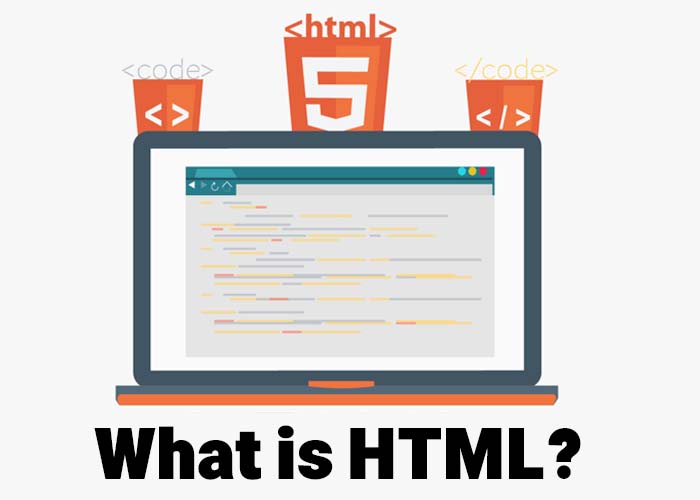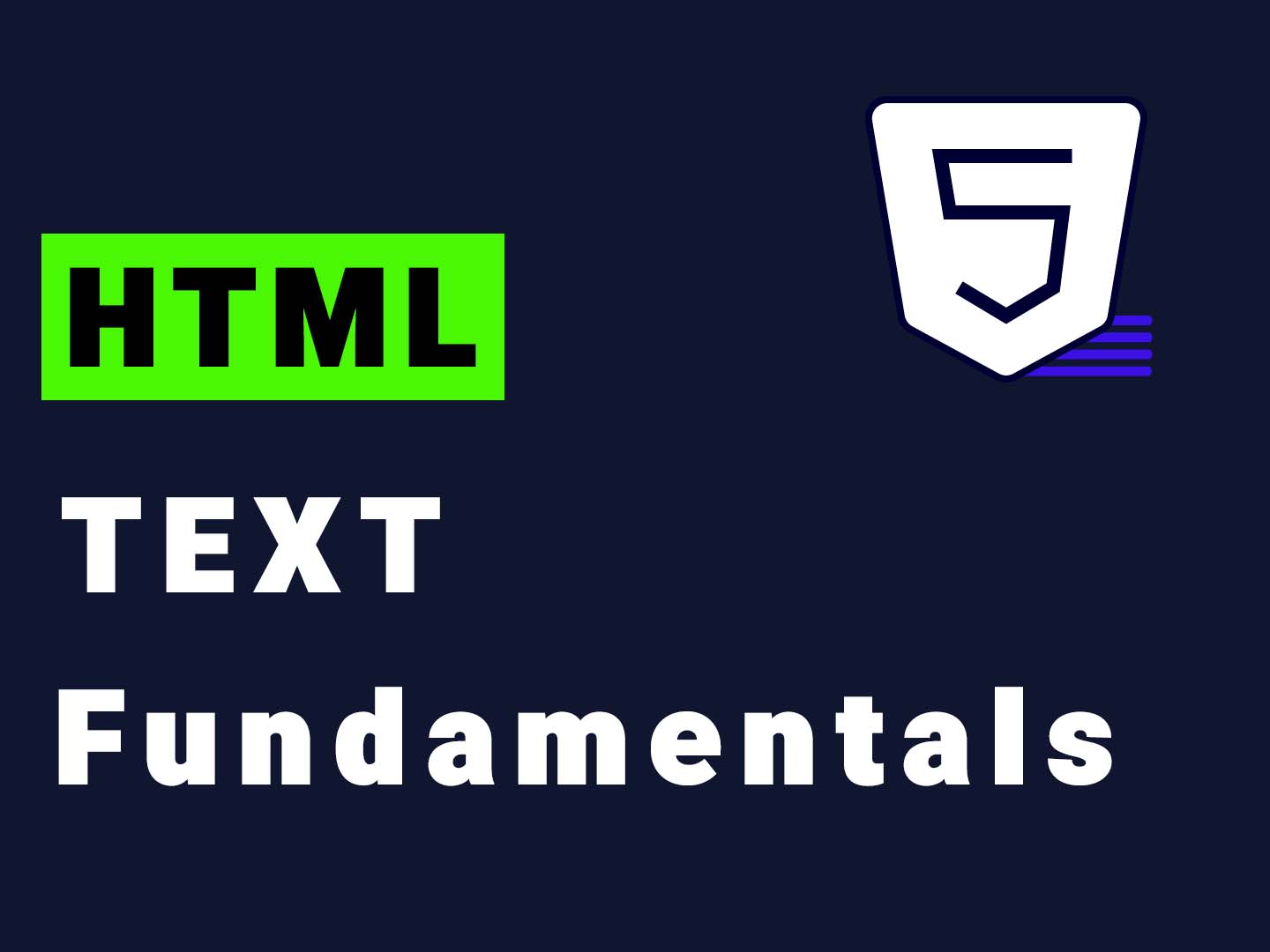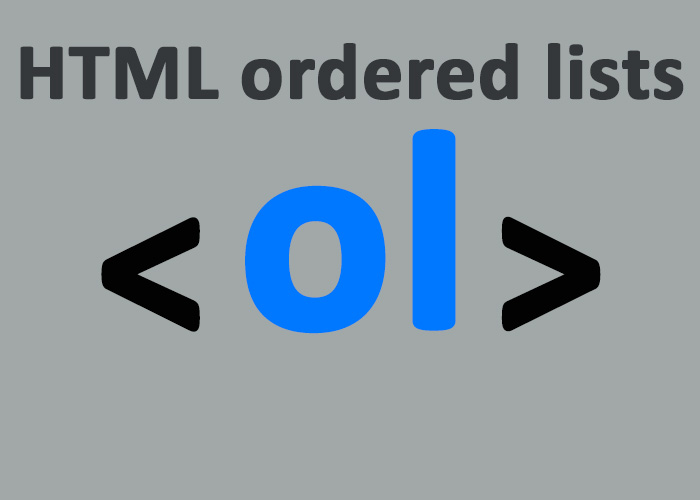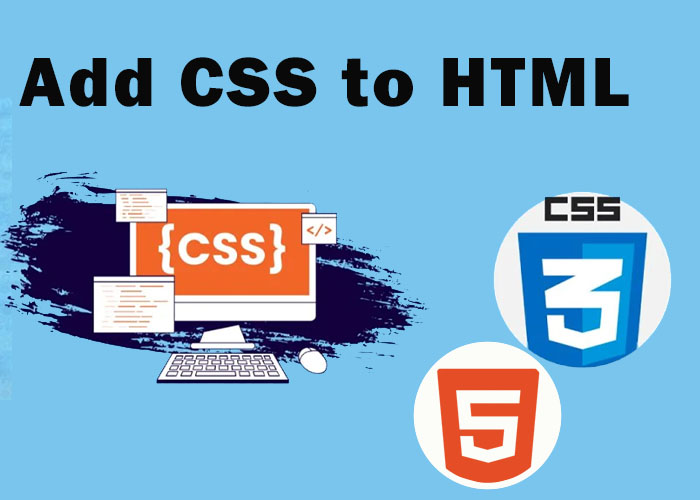HTML (HyperText Markup Language) is the standard language used to create web pages and web applications. It provides the fundamental structure of content on the internet, allowing developers to mark up text, images, links, lists, forms, and multimedia elements in a way that browsers can interpret and render for users. HTML provides the fundamental layout and content for accessible and interactive websites.
What is HTML short answer:
HTML, or HyperText Markup Language, is the basic building block for creating web pages. It structures the content so that browsers can display text, images, and other elements beautifully and consistently.
What is HTML used for:
HTML is used to create the structure and layout of web pages. It allows developers to define elements such as text, images, links, lists, and multimedia, which are then rendered by web browsers. Essentially, HTML is the backbone of web content, making it possible for users to view and interact with web applications and sites in a meaningful way.
What is HTML stand for:
HTML stands for HyperText Markup Language. It is the standard language used to create and structure content on the web, allowing developers to define the layout and components of a webpage, including text, images, and multimedia.
Why we use HTML in websites:
HTML is used in websites because it provides the essential structure that allows browsers to display content in an organized way. It makes it possible to present text, images, videos, and links in a consistent format, enabling developers to create user-friendly and interactive web pages. HTML ensures that all elements are arranged logically, helping both users and search engines understand and interact with the content effectively.
This guide explores the core aspects of HTML in depth, diving into essential elements that facilitate creating structured, meaningful content. We will cover the following key topics:
Structure
Text
Lists
Links
Images
Forms
Tables
HTML5
Video & Audio
Extra Markup
By mastering these components, you will be equipped to create well-structured and effective web pages from scratch. Whether you are a beginner trying to understand HTML fundamentals or an experienced developer seeking a refresher, understanding HTML thoroughly is crucial for building robust and accessible web projects.
Structure
The structure of an HTML document is fundamental for organizing content in a logical, predictable manner. This organizational structure ensures that browsers correctly interpret the intended presentation of content, allowing both users and search engines to effectively consume and understand the material presented. Well-structured HTML not only contributes to a positive user experience but also significantly enhances accessibility and search engine optimization (SEO).
The basic structure of an HTML document consists of the following elements:
<!DOCTYPE html>
<html>
<head>
<title>My First Web Page</title>
</head>
<body>
<h1>Welcome to My Website</h1>
<p>This is my first web page built using HTML.</p>
</body>
</html>- ``: This declaration tells the browser that the document follows HTML5 standards, ensuring proper rendering across modern browsers.
- ``: This is the root element containing all other elements, establishing the main boundary of the document.
- ``: This section contains meta-information about the document, such as the page title (
<title>), character encoding, and references to stylesheets and scripts. These elements do not directly appear in the rendered webpage but are essential for proper functioning. - ``: Defines the title of the document, which appears in the browser tab. It is critical for usability and is an essential SEO element, as search engines often display the title in search results.
- ``: This element contains the entire visible content of the webpage—such as headings, paragraphs, images, and other multimedia elements—and represents what users interact with.
The structure of HTML can be likened to the framework of a building. Using semantic elements like headings (<h1> through <h6>) and paragraphs (<p>), developers can create well-organized and accessible content. Elements such as sections (<section>) and divisions (<div>) further help in structuring content to facilitate user interaction and improve technical performance.
Properly structuring an HTML document is also fundamental for accessibility, as assistive technologies like screen readers rely on clear semantic markers to communicate content meaningfully to users with disabilities.
Text
HTML is predominantly used to present and organize text content, and it provides various tags to format text for different purposes, such as headings, paragraphs, and emphasis. The <p> tag is used to create paragraphs, while headings (<h1>, <h2>, etc.) establish a hierarchy, making content easier for users and search engines to navigate. Properly organizing text elements contributes to a structured reading experience and helps prioritize information.
Here’s an example of how HTML elements are used to format text:
<h1>Main Heading</h1>
<h2>Subheading</h2>
<p>This is a paragraph of text that provides information about the topic at hand.</p>
<p>HTML allows for text formatting using tags like <strong>bold</strong>, <em>italic</em>, and <mark>highlight</mark>.</p>- Headings: Headings are vital for creating a logical flow of content. They range from
<h1>(main title) to<h6>(least important subheading), each providing a specific level of emphasis. Using headings appropriately also enhances SEO by making the document’s content hierarchy clearer to search engines. - Paragraphs (``********************************************************): Grouping sentences into paragraphs makes content readable and scannable. Paragraph tags help segment text, improving the reader's ability to process information.
- Formatting Tags: HTML includes several formatting tags to emphasize text, such as
<strong>for bold,<em>for italics, and<mark>for highlighting. These elements help ensure readers focus on key information or denote specific importance. - Special Characters: HTML also supports inserting special characters using entity codes (e.g.,
&for&or©for©). These characters ensure the accurate representation of text, especially for symbols.
Text is the cornerstone of most webpages. Effective use of headings, paragraphs, and formatting significantly improves user engagement and readability, contributing to a positive user experience.
Lists
Lists are essential for organizing related information in a structured, easily digestible manner. HTML supports two main types of lists:
Unordered Lists (``********************************************************): Suitable when the order of items does not matter. These lists use bullet points to represent items.
Ordered Lists (``********************************************************): Suitable when the order of items is significant, such as in step-by-step instructions. Items are numbered automatically.
Here’s an example demonstrating the use of both types of lists:
<h3>Shopping List</h3>
<ul>
<li>Milk</li>
<li>Bread</li>
<li>Cheese</li>
</ul>
<h3>Steps to Bake a Cake</h3>
<ol>
<li>Preheat the oven</li>
<li>Mix ingredients</li>
<li>Bake for 30 minutes</li>
</ol>Unordered Lists (``********************************************************): Represent items that are equally prioritized, marked with bullet points.
Ordered Lists (``********************************************************): Represent sequential items, useful for procedures or ranking. They create a logical progression for readers.
List Items (``********************************************************): Each item within a list is defined by an <li> tag. Lists can also be nested to create hierarchies of related content.
Lists improve the structure of the page and make it easier for users to locate and digest relevant information. They are an effective tool for displaying grouped content and enhancing the usability of webpages.
Links
Links are a core aspect of the web, allowing users to navigate from one page to another, connect related information, and create an interconnected web of content. Links are created using the <a> (anchor) tag, which establishes connections between different webpages or sections.
Example:
<a href="https://www.example.com">Visit Example Website</a>- ``** Attribute**: The
hrefattribute defines the target URL of the link. Links can point to other websites, pages within the same site, or specific sections of a page. - Link Text: The text enclosed by the
<a>tag is what users click on, and it should clearly convey where the link will lead. Descriptive link text is key to both accessibility and user experience.
You can also create anchor links to jump to specific parts of the same page by utilizing the id attribute:
<a href="#section2">Jump to Section 2</a>
...
<h2 id="section2">Section 2</h2>Links are integral to web navigation and facilitate a cohesive user experience. They are essential for establishing intuitive navigation paths and boosting engagement by connecting related content.
Images
Images are an important part of web content, offering visual context and enhancing the overall experience for users. HTML makes it easy to add images using the <img> tag.
Example:
<img src="image.jpg" alt="A beautiful landscape">- ``** Attribute**: Specifies the path to the image file, which can be either relative or absolute.
- ``** Attribute**: Provides a textual alternative to the image. This is crucial for users relying on screen readers and for situations where the image fails to load. The
alttext should accurately describe the image's purpose or content. - Additional Attributes: Attributes like
widthandheightcan be used to control the display size of images, thereby contributing to layout consistency and enhancing loading performance.
Images can make a webpage more engaging and visually appealing. Proper use of the alt attribute also ensures better accessibility, making the web more inclusive for users with visual impairments.
Forms
Forms are used to collect user input, making them integral to tasks such as signing up, providing feedback, or conducting transactions. HTML forms consist of different types of input elements, such as text fields, checkboxes, radio buttons, and submission buttons.
Example:
<form action="/submit" method="post">
<label for="name">Name:</label>
<input type="text" id="name" name="name">
<label for="email">Email:</label>
<input type="email" id="email" name="email">
<button type="submit">Submit</button>
</form>``: The <form> tag contains all input elements and defines the data submission process.
- ``** Attribute**: Specifies where the form data should be sent for processing. Typically, it points to a server-side script.
- ``** Attribute**: Defines the HTTP method to use (
GETorPOST).POSTis used for submitting data that modifies the server, whileGETis used to retrieve information. - Input Elements: Forms include elements like
<input>,<textarea>,<select>, and<button>, which gather user information. HTML5 introduced new input types (email,url,date, etc.) that provide specific input requirements and client-side validation. - Forms are essential for creating interactive websites, enabling user engagement and data collection. Well-designed forms improve user experience by making data input clear and intuitive.
Tables
Tables allow for the display of data in an organized, tabular format. HTML tables are constructed using the <table> tag, with rows (<tr>) and cells (<td> or <th>).
Example:
<table>
<tr>
<th>Name</th>
<th>Age</th>
</tr>
<tr>
<td>John Doe</td>
<td>25</td>
</tr>
<tr>
<td>Jane Smith</td>
<td>30</td>
</tr>
</table>- ``: Defines header cells, providing context for data in each column. Header cells are generally bold and centered to distinguish them from standard data cells.
- ``: Represents a table row, and can contain one or multiple cells.
- ``: Represents a standard cell containing data.
Tables are ideal for representing structured information, such as statistics, schedules, or comparisons. However, they should be used strictly for tabular data rather than for page layout purposes to maintain accessibility and ease of maintenance.
HTML5
HTML5 is the latest version of HTML, bringing a wide range of new features that enhance the capabilities of web development. HTML5 was developed to overcome limitations in earlier versions and to better support multimedia, interactivity, and dynamic content.
Key features of HTML5 include:
New Semantic Elements: HTML5 introduced a variety of new elements to improve the semantic structure of web content:
- ``: Defines introductory content or navigational links.
- ``: Contains footer information, including copyrights and links.
- ``: Represents a self-contained, reusable piece of content, like a news article or blog post.
- ``: Groups related content into thematic sections.
- ``: Represents a set of navigational links.
- ``: Contains additional content, often presented as a sidebar.
Multimedia Support: HTML5 includes native support for audio and video elements, eliminating the need for third-party plugins. The <audio> and <video> tags simplify adding multimedia content.
These tags come with attributes such as controls, autoplay, loop, and muted, offering enhanced control over media playback.
Enhanced Forms: HTML5 introduced new input types and attributes to enhance form usability:
- Input Types: New types such as
email,url,date, andnumberprovide built-in validation and appropriate input behavior. - Validation Attributes: HTML5 includes attributes like
requiredandpatternto perform client-side validation.
Canvas and SVG: The <canvas> element allows developers to draw graphics and animations directly onto the page using JavaScript, useful for building dynamic and interactive visualizations.
Canvas is suitable for game development and real-time data visualization, while SVG (Scalable Vector Graphics) offers vector graphics for sharp, high-resolution displays.
Geolocation API: HTML5 includes a Geolocation API that can be used to determine a user's geographical location (with their consent). This feature is valuable for services like mapping and personalized content.
Geolocation provides valuable personalization opportunities and improves user experiences by delivering location-specific information.
Local Storage: HTML5 provides the Web Storage API, including localStorage and sessionStorage, to allow data to be stored locally in the user's browser.
Unlike cookies, data stored in localStorage persists without expiration, providing a more efficient and secure way to manage daییta across sessions.
Video & Audio
Video and audio elements are integral to creating a rich multimedia experience on the web. HTML5 introduced the <video> and <audio> elements, making it easier to embed media files directly into webpages without relying on third-party plugins like Flash. This advancement has been crucial in enhancing the accessibility, performance, and versatility of web content.
Video: The <video> element allows developers to embed video content, providing users with control attributes like play, pause, and volume. Here’s an example:
<video controls>
<source src="example.mp4" type="video/mp4">
Your browser does not support the video tag.
</video>The <video> element supports multiple attributes:
- ``: Adds play, pause, and volume control options for users.
- ``: Starts the video automatically when the page loads.
- ``: Plays the video repeatedly in a loop.
- ``: Mutes the video by default.
Audio: The <audio> element is used to embed audio files, allowing users to listen to podcasts, music, or other audio clips directly from the browser.
<audio controls>
<source src="example.mp3" type="audio/mpeg">
Your browser does not support the audio element.
</audio>Attributes like controls, autoplay, and loop provide functionality similar to the <video> element. Both <video> and <audio> elements contribute to improved user engagement by enablig media playback without additional software.
Extra Markup
HTML also allows for additional elements and attributes that help developers manage layout, style, and metadata more effectively. These elements are often referred to as "extra markup" and are used to provide supplementary information about the document or to control its layout.
- ``: Used within the
<head>element to specify metadata, such as the character set, author, description, and keywords for SEO purposes. - ``** and ****
<span>**: These elements are used to group content for styling purposes. While<div>is a block-level element used to group larger sections of content,<span>is an inline element that is useful for styling specific parts of text without breaking the flow. - ``: This element is used to embed another HTML document within the current page. Commonly used for embedding maps, videos, or other content from external sources.
- ``** and ****
<noscript>**: The<script>tag is used to include JavaScript, which is responsible for client-side functionality. The<noscript>tag is used to provide alternative content for users whose browsers do not support JavaScript.
These extra markup elements enhance the interactivity, metadata management, and content structuring of a webpage, making it more functional, accessible, and tailored to user and search engine needs.
Conclusion
HTML is the bedrock of all web pages, providing the essential structure that underlies everything from simple text documents to complex interactive web applications. Understanding key HTML elements—including structure, text, lists, links, images, forms, and tables—is essential for developing effective and accessible web content.
With HTML5, modern web development has been significantly improved, incorporating features like multimedia support, enhanced forms, and semantic elements that make the web richer and more dynamic. Key features of HTML5 include multimedia integration, enhanced form capabilities, semantic structure, and APIs for interactivity. HTML5 enables developers to create more interactive and efficient websites while maintaining accessibility standards.
The journey into HTML begins with these fundamental elements, but the possibilities grow as you delve deeper and learn to combine them into more sophisticated designs. Mastering HTML and leveraging HTML5 capabilities will enable you to build engaging, accessible, and high-quality web experiences that cater to users globally and provide them with a meaningful interaction with your content.
We'd love to hear from you! Please leave a comment below sharing your thoughts, questions, or suggestions about this guide. Your feedback helps us improve and provide more valuable content for everyone.





